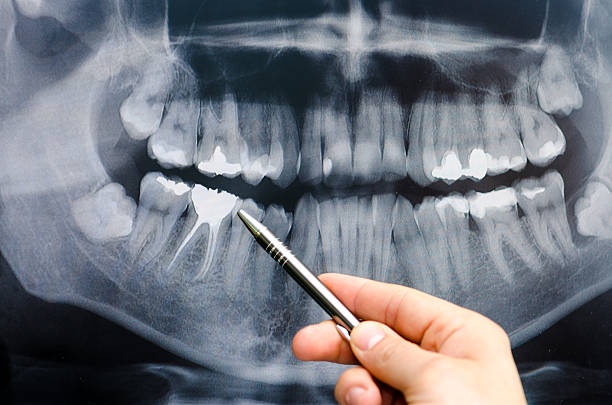In today's world, where health services are continuously evolving, dental X-rays services stand out as a cornerstone in the realm of oral healthcare. Offering a glimpse beneath the surface, these services are instrumental in diagnosing and treating dental issues that are not visible to the naked eye. This comprehensive guide delves into the nuances of dental X-ray services, highlighting their significance, types, benefits, and essential safety considerations.
The Importance of Dental X-Rays Services
Dental X-rays services are pivotal in the early detection and diagnosis of oral diseases. They provide detailed images of your teeth, gums, and jawbone, helping dentists identify issues such as tooth decay, cavities, impacted teeth, and bone loss. Early detection through X-rays can save patients from future discomfort and potentially costly treatments, making dental X-rays an indispensable tool in preventive oral care.
Types of Dental X-Rays
The importance of dental X-rays lies in their ability to provide critical insights that are not visible during a standard dental examination. They help in the early detection of dental issues such as cavities, root infections, and bone abnormalities. By identifying problems early, dental X-rays facilitate timely treatment, preventing more serious conditions. They also assist in planning treatments for dental implants, braces, extractions, and other dental procedures, ensuring precise and effective care. Now, let’s learn about the types of dental X-rays:
Intraoral X-rays
Intraoral X-rays are the most prevalent type, offering high-detail visuals of each tooth. They are instrumental in examining tooth health closely and identifying issues at an early stage.
Bitewing X-rays
Bitewing X-rays specifically target the crown sections of both upper and lower teeth within a single mouth region, providing detailed views for thorough examination and assessment.
Periapical X-rays
Periapical X-rays capture the full extent of a tooth, from its crown down to the root, offering a comprehensive view for detailed analysis of its structure and health.
Occlusal X-rays
Occlusal X-rays deliver a comprehensive perspective on the alignment and arches of the teeth, showcasing their placement within the mouth for a full evaluation.
Extraoral X-Rays
These are concerned with the jaw and skull, providing information on the growth and development of the mouth structure, and identifying potential issues with the jawbone and temporomandibular joint (TMJ).
Benefits of Dental X-Rays Services
Dental X-ray services offer numerous benefits, including the early detection of hidden dental issues like cavities between teeth, jawbone damage, and impacted teeth. They are crucial for planning dental treatments, such as braces, implants, and extractions, ensuring precision and safety. X-rays also help monitor oral health progress and detect conditions early, reducing the need for more complex treatments later, thus preserving both oral and overall health.
Early Detection
Early detection through dental X-rays is pivotal in spotting the initial indicators of decay, gum disease, and oral infections. This technology allows for the identification of these issues at their nascent stage, when they are most treatable. By catching problems early, dental X-rays enable timely intervention, preventing the progression of conditions that could lead to more severe oral health issues. This early detection is crucial for maintaining optimal dental health and avoiding complex treatments down the line.
Preventive Care
Preventive care is significantly bolstered by dental X-rays, which aid in devising strategies to thwart the development of serious dental problems. This imaging allows dentists to identify and address minor issues before they escalate into major concerns. By utilizing X-rays as a component of preventive care, dental professionals can ensure that small problems are managed promptly, reducing the risk of more severe complications and promoting long-term oral health.
Diagnostic Tool
As a diagnostic tool, dental X-rays play a pivotal role in identifying prevalent dental issues such as cavities, infections at the tooth's root, and complications related to wisdom teeth. This imaging technology offers a beneath-the-surface look at dental health, allowing dentists to detect problems that aren't visible to the naked eye. Early diagnosis through X-rays facilitates prompt and effective treatment, preventing the escalation of these common but potentially serious dental conditions.
Treatment Planning
Treatment planning is significantly enhanced by dental X-rays, which are crucial for meticulously preparing for various dental procedures including implants, braces, and extractions. These diagnostic images provide dentists with a detailed view of the oral structure, enabling them to design more accurate and effective treatment plans. This careful preparation contributes to improved treatment outcomes, ensuring patients receive the most appropriate and efficient dental care tailored to their specific needs.
Safety Considerations
Modern dental X-rays services employ digital technology, significantly reducing radiation exposure. Despite the minimal risk, dental professionals take numerous precautions, including the use of lead aprons and thyroid collars, to ensure patient safety. It's crucial to inform your dentist if you are pregnant or suspect you might be.
Choosing the Right Dental X-Ray Services
Selecting the appropriate dental X-rays service requires considering factors such as the type of technology used, the dentist's expertise, and the specific needs of your oral health. It is advisable to consult with your dental care provider about the frequency of X-rays needed based on your oral health status, age, and risk for dental disease.
Dental X-Ray Services in Modern Dentistry
Dental X-rays services are essential in today's dental care, offering vital data for the early detection, diagnosis, and treatment of dental conditions. Understanding the various types of X-rays, their advantages, and their safety measures enables individuals to make knowledgeable choices about their dental health. These services not only help in identifying and addressing oral health problems early on but also underscore the importance of dental X-rays as a crucial investment in one's overall health and well-being.


No comments yet